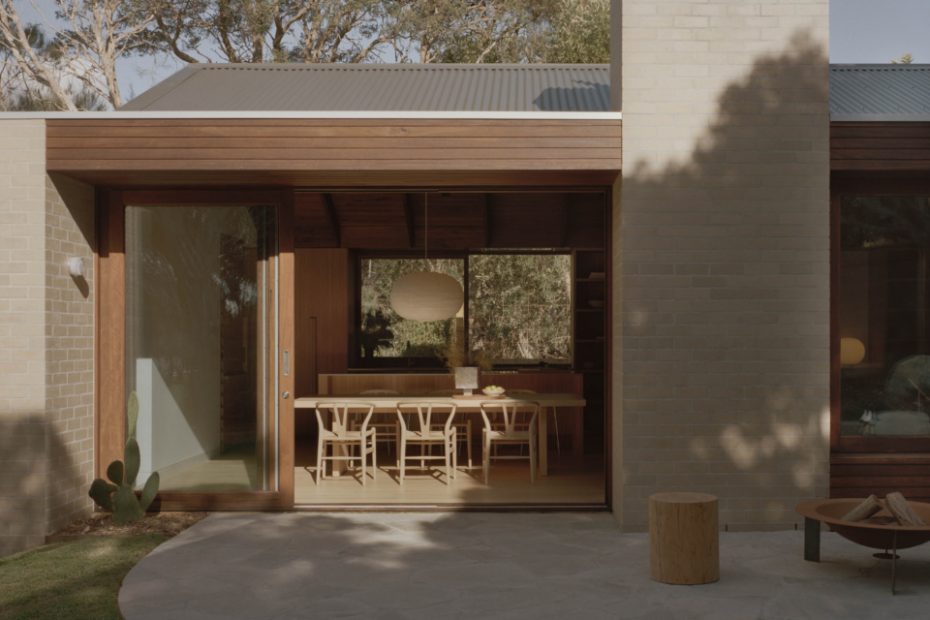Inside A Striking Mornington Peninsula Beach House Transformation
Architecture
Marianne House by Victoria Merrett Architects.
The exterior is clad in Artisan Aurora bricks from Nubrik, and blackbutt timber stained in walnut.
The new extension sits quietly behind the original facade of the cabin-like home.
The design prioritises indoor-outdoor flow.
Inside, natural materials connect the inside to the surrounding environment.
The dramatic vaulted ceiling in the kitchen, dining and living space references the exposed rafters in the original home. Slab End Dining Table and Wishbone Chairs by Mark Tuckey. IXIA Vase by Hattie Molloy.
Windows placed around the home flood the spaces with natural light and invite the outdoors in — a key requirement from the clients.
Plinth Sofa and Oxo Lite Coffee Table by Mark Tuckey. Light timbers reference the surrounding landscape.
The main bedroom sits in the new extension. Bedding by Tekla.
The structure of the original home remains, facing the street.
The entrance intersects where old meets new.
The home lies low behind local moonah trees.
Homes on Victoria’s Mornington Peninsula have a certain local architectural vernacular. As most sit among the rugged coastal landscape, their forms are simple, their layouts functional and — perhaps most importantly — they all maintain a connection to their natural surroundings, which informs the overall aesthetic and spatial organisation.
Marianne House, designed by Victoria Merrett Architects (VMA), is such a home. It sits on the arm of the peninsula, in Rye, surrounded by weathered and windswept Melaleuca lanceolata (Moonah tree) with coastal grasses and rock underfoot.
Despite its dramatic recent transformation, the home’s modern new addition pays heed to its landscape and history — striking a balance of old and new; big and small; open and private.
‘The original house felt like a cabin, with a large brick fireplace and timber-lined walls and ceilings,’ explains Victoria Merrett, director of Victoria Merrett Architecture. ‘We wanted to keep parts of the existing house as there was a lot of charm.’
The footprint of the original home — a mere 76 square metres — was retained, but the floor plan was reconfigured to allow for more spacious rooms; the structure now housing two bedrooms, a lounge, bathroom, and study.
The extension, which expands the home to 208 square metres to encompass the kitchen, dining, living, main bedroom, laundry and bathroom, follows the gentle slope of the site, with steps and a new central courtyard delineating old from new.
The charm of the original home remains in the front. ‘The house was very modest, but classic Mornington Peninsula beach house style with exposed rafters, pine lining board clad walls, slate floors and a large brick fireplace,’ explains Victoria.
It was important, both for the clients and Victoria, to bring the feeling of the original home into the renovation and new addition. The design, therefore, took its lead from the old home; where the original exposed rafters are echoed in the dramatic vaulted ceiling over the new kitchen, living, and dining space. The updated material palette references the home’s history with pale brick and walnut stained timber cladding, and the original fireplace has been given new life with a sand and cement finish.
‘We wanted to maximise the natural light, create private and open zones, and integrate the design with the surrounding coastal landscape,’ explains Victoria.
The old home still remains, in essence, yet is now primed for modern family living and indoor-outdoor flow. A balancing act that quietly stuck the landing.
This story originally appeared in Issue 01 of The Design Files Magazine – available here.
